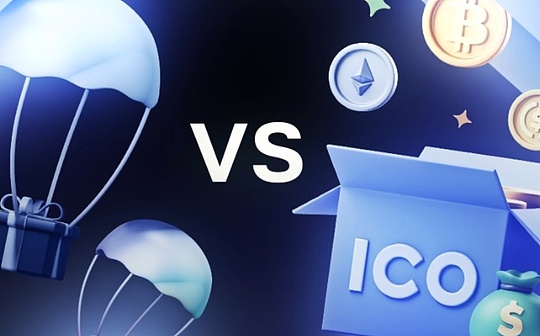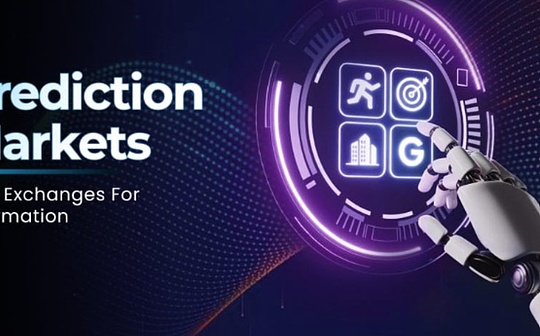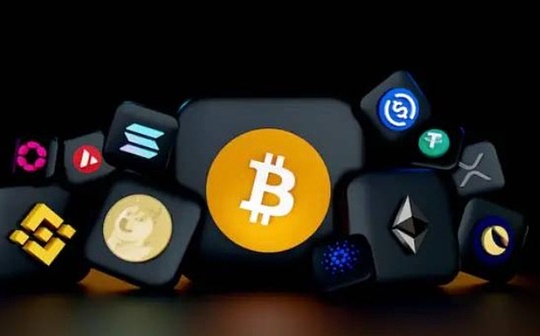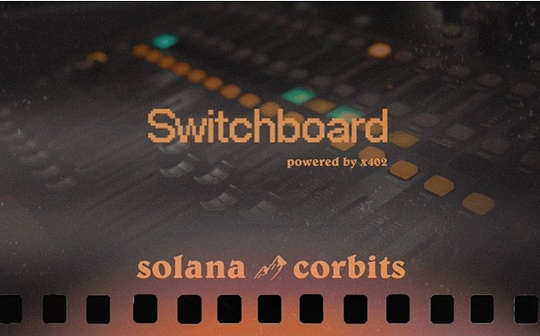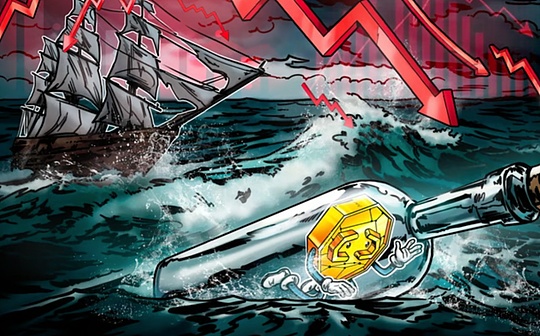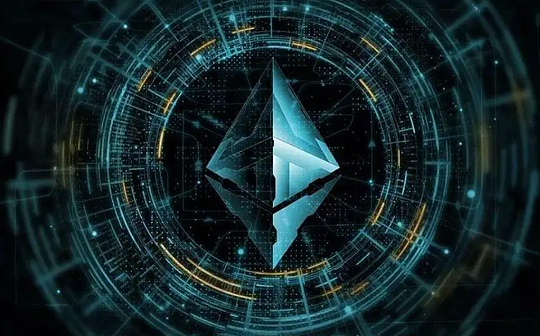
Author: Thor Hartvigsen, Defi analyst Translation: Shan Oppa, Bitchain Vision
introduce
Although Ethereum outperformed the S&P 500, Nasdaq and gold, Ethereum was under the shadow of its peers for most of last year, which had a greater appreciation of prices and an ecosystem.Growth.

Surprisingly, Bitcoin’s return rate has almost doubled, while Solana’s return rate reached four-digits at the end of 2023.
Surprisingly, Bitcoin nearly doubled by the end of 2023, while Solana briefly hit a four-digit rate of return.
As the New Year comes, the sentiment towards Ethereum on Twitter is not very good either.Public support and morale reached an all-time low, with bullish people considered opposition and pagan.But it seems that things are about to change, with several catalysts in the Ethereum ecosystem this year.
Taking the 2024 roadmap as a guide, let’s see what Ethereum plans for the future.
1. EIP-4844
In the upcoming Dencun upgrade, EIP-4844 (also known as Proto-Danksharding) introduces novel mechanisms that greatly benefit Layer 2.
The relevant features of this EIP include:
1. blobs (data blocks)
– Low-cost means to efficiently store large amounts of transaction data;
2. blob-carrying transactions (transactions carrying data blocks)
– Transaction containing a list of references to the data blocks contained therein.
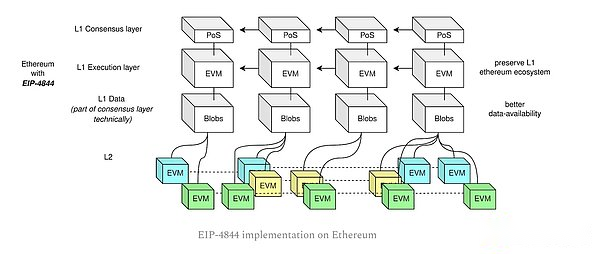
Utilizing the use of data blocks allows the creation of a pseudo-layer that improves data availability, thereby simplifying communication between L2 and Ethereum.
These new concepts will revolutionize the way roll-up serializers publish transaction data to Ethereum.
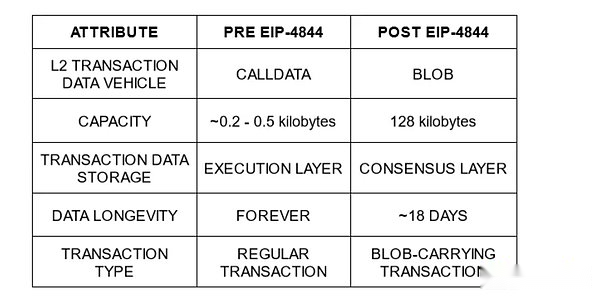
The current approach is to add bundled transaction data in the “calldata” of the transaction and send it to L1, which is quite expensive.
However, publishing data to Ethereum using transactions carrying blobs will significantly reduce gas fees, as only references to blobs containing L2 transactions are available for use by the execution layer, which means that blob data cannot be re-executed.All data contained in the blob is stored in the consensus layer (beacon node) and has limited time.A small trade-off for cheaper transactions is the increase in block size, requiring nodes to have greater storage capacity.
There are several benefits to a significant reduction in transaction costs on Ethereum Rollup.First, it allows new use cases that are currently too expensive to run on Rollup, such as some order book transaction protocols, web3 games, and more.Secondly, the reduction in the cost of publishing transactions to the Ethereum main network also led to an increase in Rollup’s profit margin.Therefore, this is also a direct catalyst for L2 tokens (such as ARB, OP, METIS, etc.).
2. ETH spot ETF
Although it seems likely that the spot Bitcoin ETF will be approved, the situation with similar products on Ethereum is still in a blur.The SEC has delayed its decision on several of these ETFs, likely to make a decision after the Bitcoin counterpart is opened to the public.

Although Ethereum futures ETFs performed disappointingly and capital inflows were not ideal, institutions’ interest in spot ETFs is still clearly visible.Many well-known institutions are actively seeking to utilize this new investment tool, which is in line with the ESG concept that is currently popular in traditional finance.
At present, all listing applications are pending, and despite delays, positive results are still expected.Given the impact of spot BTC ETF applications on BTC prices in the second half of 2023, Ethereum ETF applications alone may drive ETH to perform well in the market in the coming months.
3. Re-pled
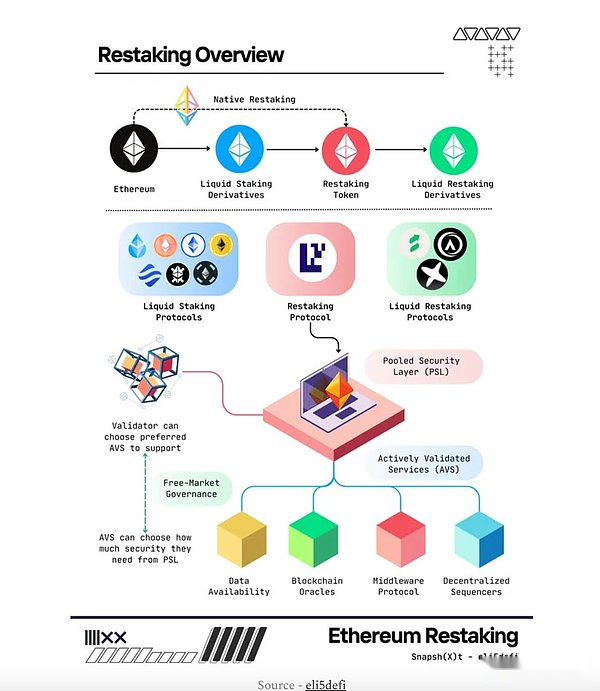
Restaking is a novel concept introduced by EigenLayer, through which services can leverage Ethereum’s security and consensus mechanisms.EigenLayer is a marketplace that connects ETH restakers and “Active Verification Services” (AVS).AVS can be any type of service, from oracle networks to sidechains to bridges, and all wish to inherit the security of Ethereum.ETH stakers can obtain higher staking benefits by re-staking their ETH to delegate it to AVS.Essentially, ETH stakers can participate in data storage, computing, or other additional services in addition to block verification.
In addition to EigenLayer’s upcoming mainnet launch, an important narrative for Ethereum and ETH this year, the platform is also carrying out a points program through which early ETH depositors can mine upcoming airdrops.The EIGEN token has the potential to go public at a multi-billion dollar valuation, so this airdrop could become a major wealth creation event and could be a positive catalyst for the Ethereum native protocol.
As the Dencun upgrade brings capital efficiency improvements, currently available L2 solutions will become cheaper, which will make L2 more competitive in a field filled with fast and inexpensive alternatives.In addition, use cases that were previously unavailable are now worth exploring.
It is expected that the user base of L2 will grow significantly in the next year, the prospects are very optimistic, and catalysts are emerging one after another.
4. L2 growth
As the Dencun upgrade brings capital efficiency improvements, currently available L2 solutions will become cheaper, which will make L2 more competitive in a field filled with fast and inexpensive alternatives.In addition, use cases that were previously unavailable are now worth exploring.
It is expected that the user base of L2 will grow significantly in the next year, the prospects are very optimistic, and catalysts are emerging one after another.
Optimistic Roll-ups
Optimistic Roll-ups, the most striking Optimistic Roll-ups in the L2 space, recently announced exciting development details for the coming.
Optimism
To unify all the otherwise isolated L2, Optimism decided to increase its investment in infrastructure providers and attempt to create an interconnected chain network based on its open source technology stack.
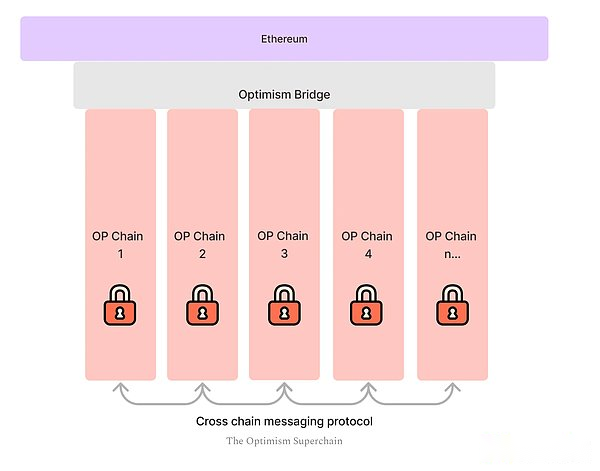
All chains included in a “superchain” comply with the same standard, which ensures maximum interoperability between all chains and allows developers to build protocols that can be used by all child chains.
Arbitrum:
By using one of the Arbitrum chains as the settlement layer, developers can easily deploy dedicated chains with customizable configurations.
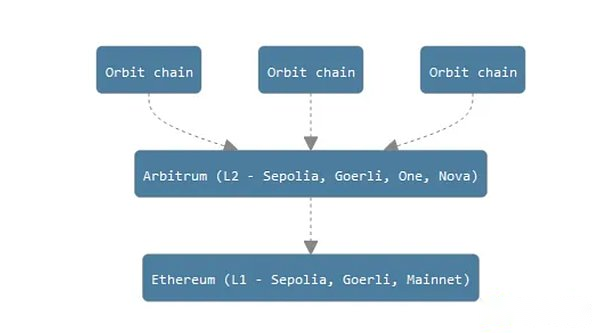
The Orbit chain is ideal for building applications with specific network requirements, while also leveraging Arbitrum’s technology and additional features for a variety of use cases:
-
Permission Access Control – Data reading or contract deployment of the chain can be restricted by the owner.
-
Custom gas tokens – Transaction fees can be charged any token.
-
Self-Governance – The Orbit chain is not regulated by Arbitrum DAO, which means the owner has full control over the network.
Metis
To address most L2 centralization and security issues using a single sorter, Metis is trying to create a concept of a decentralized sorter pool.With its existing peer-to-peer validators, this approach will significantly reduce centralization and give stakers of their native tokens the opportunity to run their own sorters.
Coinbase > Base funnel
With the cumbersome bridging process and the necessity to interact with Ethereum, attracting new users has always been a challenge for L2, which is unacceptable for users who want to avoid expensive transactions and a simple user experience.
As one of the world’s largest exchanges, Coinbase attracts a large number of new users from around the world to their platform every year.
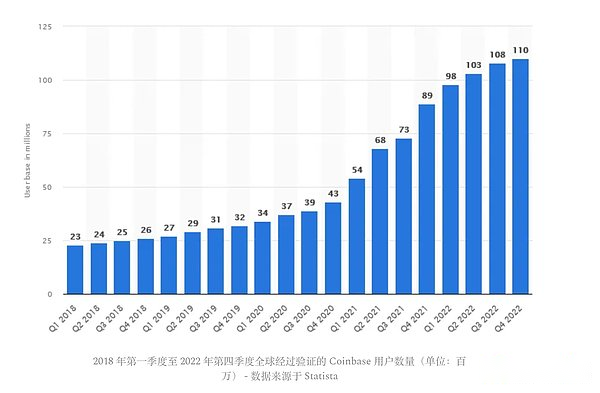
This is the perfect scene for Coinbase to promote its L2 Base to its local audience of its major centralized exchanges.Having a huge potential market helps increase the visibility and awareness of on-chain applications.Coupled with a simple bridging solution between exchanges and aggregation, even a small conversion rate can have a huge net positive impact on the ecosystem.
Eclipse
Another interesting development in the rollup space is Eclipse, which was launched later in the first quarter of Ethereum L2.Eclipse is unique in that it uses Solana virtual machines as the execution environment, provides data availability using Celestia, and demonstrates using Risc Zero.This could be another catalyst for the Ethereum ecosystem this year thanks to its focus on attracting Solana dapp to Ethereum.
5. ETH as currency
In terms of expense incurred, Ethereum alone accounts for more than 50% of the total expense incurred by L1 in 2023.Its dominance has now waned, mainly due to the emergence of the Bitcoin ecosystem following the inscription boom.
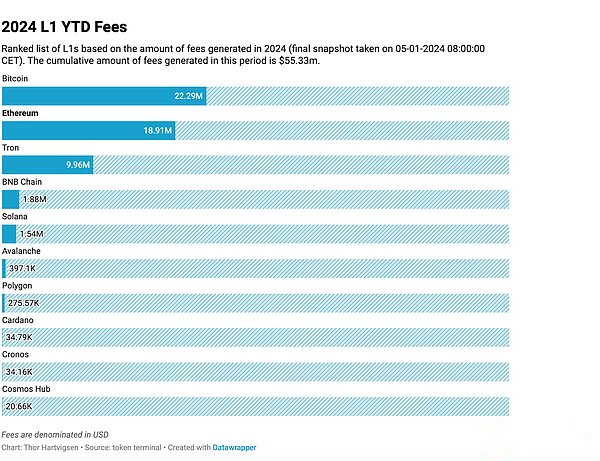
Strictly looking at financial reports, Ethereum is one of the few major blockchains that achieve positive returns.
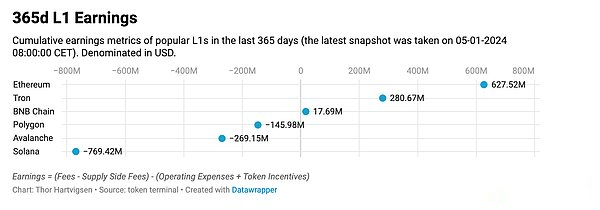
Since the fee income generated by the Ethereum network exceeds the dilution caused by issuing new coins, the actual pledge income of ETH can be positive, and the nominal pledge income will not be offset by inflation.Due to the token burning mechanism introduced by London upgrade and the shift to a proof of stake mechanism in 2022, Ethereum’s supply has shrunk at a rate of about -0.215% each year and is in a net deflation state.
With the new upgrade aimed at further expanding Ethereum, the existing concept continues to develop steadily, and the theory of “ultrasonic currency” may not be groundless.
Summarize
All in all, after a quiet 2023, Ethereum will usher in an eventful year in 2024.Technology and narrative are undoubtedly bullish, but it remains to be seen whether prices will rise simultaneously.Historically, network upgrades have often led to positive growth.




